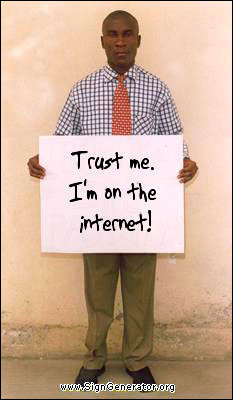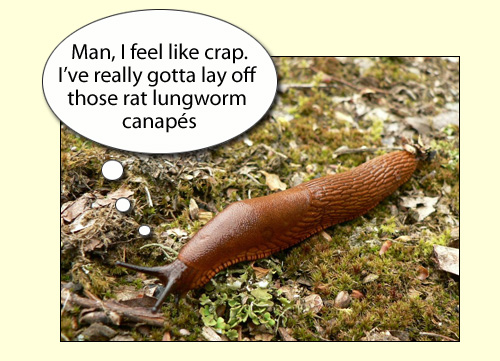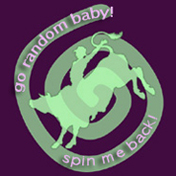Wed 19 May 2010
Shoo!TAG Unplugged
Posted by anaglyph under Gadgets, Hokum, Numbers, Science, Skeptical Thinking, Technology, WooWoo
[15] Comments
Recently on Tetherd Cow Ahead we did a simple science experiment that allowed us to reveal a visual representation of the magnetic data on the stripe of a standard swipe card. You will remember that one of the magnetic cards I examined in that post was the dubious Shoo!TAG, which according to its inventors, is a miraculous device that repels fleas and ticks (and other ‘targeted’ pests!) from you or your pets by using ‘the power of the bio-energetic field which surrounds all living thing to create a frequency barrier’.
It turns out that some pretty smart people read the Science Experiment post, including commenters MomentumV and the inimitable Dewi Morgan. To my great surprise, both MomentumV and Dewi were actually able to look at my images and read the card’s encoded data directly off them – something I had never anticipated as possible – and make some great initial headway in decoding the mysterious power of the Shoo!TAG.
The results were cryptic at first. Surprisingly, all of us missed the significance of the letters A E L F, which appeared on the card, along with a string of numbers. I threw up an image of the second ‘Cat’ tag I had (this one supposed to ward off ticks) and Dewi came up with a clever little javascript to auto-decode ShooTags. A number of things then dropped swiftly into focus. We were looking at the data backwards. You can experience the discovery as it happened in the Comments on that post – it makes for a wonderful scientific ‘Aha!’ moment.
This is what Dewi found when he ran the data through his script (all the technical details of how it was achieved are explained in detail on Dewi’s journal): ((It’s probably the best description of how mag stripes work anywhere on the net – trust me, before Dewi came along, I looked!))
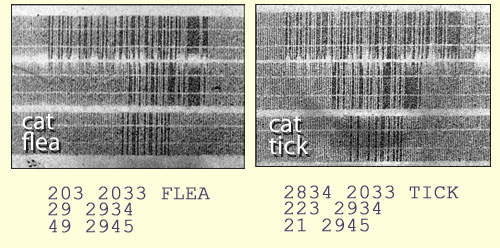
I’ve arranged the characters to correspond with their equivalent position on the cards. Note that the words ‘FLEA’ and ‘TICK’ are actually encoded as letters in the magnetic data.
In the interests of science I decided to expand our dataset, and to this end I acquired a pair of the ‘Dog’ ShooTags from a nearby pet supply shop. ((‘Do you know how they work?’, the sales assistant asked. ‘No-one knows how they work. It’s bunk’, said I. She seemed nonplussed.)) Dewi was kind enough to decode them also:
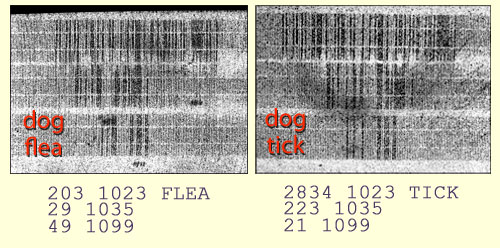
There is some numerical symmetry and repetition apparent here, and the obvious conclusion is that the various numbers simply signify ‘Dog’ or ‘Cat’ and ‘Flea’ or ‘Tick’. ((There are a number of ways the digits can be paired with the actual words in the code or with the animal on which the tag is supposed to be worn.)) Melissa Rogers, one of the CEOs of ShooTag claims, however, that the tags are ‘encoded with earth friendly frequencies’ in the form of a ‘three dimensional or tri-vector signature imprinted onto the magnetic field of the card’ and the ShooTag FAQ says that ‘we are only using the energy field that is already emitted from an animal and adding a few frequencies that we know that specific insects do not like’. The implication is, therefore, that the data on the cards is some kind of numerical representation of these supposedly effective frequencies. I think you will agree with me that it beggars belief to think that anyone would base a serious 21st century product on this concept. It makes wearing a ShooTag the modern equivalent of the old superstitious practice of warding off evil spirits by carrying around a piece of paper with numbers written on it.
Whatever the characters signify, there is no known scientific mechanism that would explain how a few lines of magnetic data in a common encoding format, written to a card that is designed to be swiped through a checkout terminal, could have any effect at all on fleas, ticks, mosquitoes or any other insect.
[NOTE: I think there is still probably some kind of screwy logic to the numbers on the cards – if there’s anyone out there with some expertise in cryptography, or who feels like going on a treasure hunt, any extra information is welcomed. Places to start: Rife Frequencies, Quantum BioEnergetics and Quantum Energy Wellness (where you will see the term ‘tri-vector’ bandied about some more). Who knows whether any of these are relevant in the case of ShooTags, but it would be hugely satisfying to find out…]

